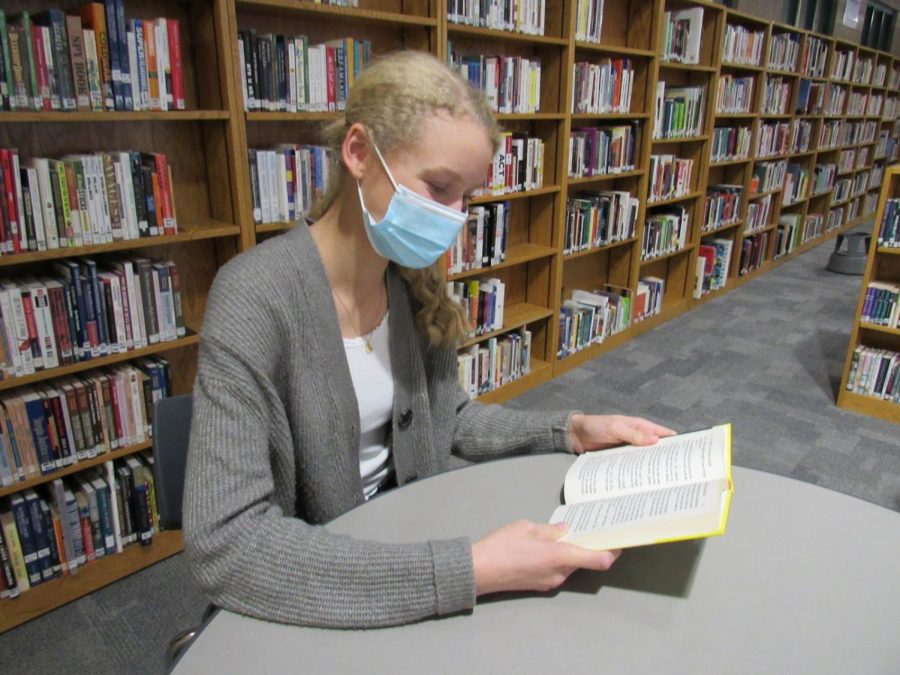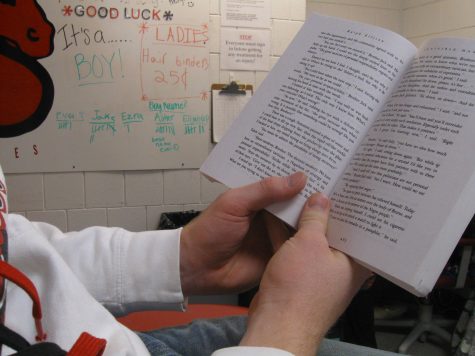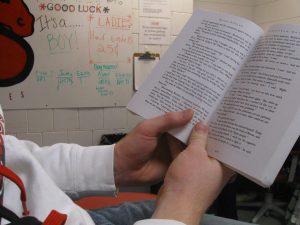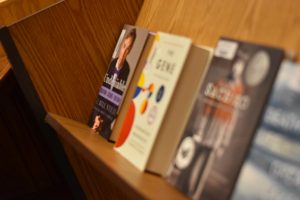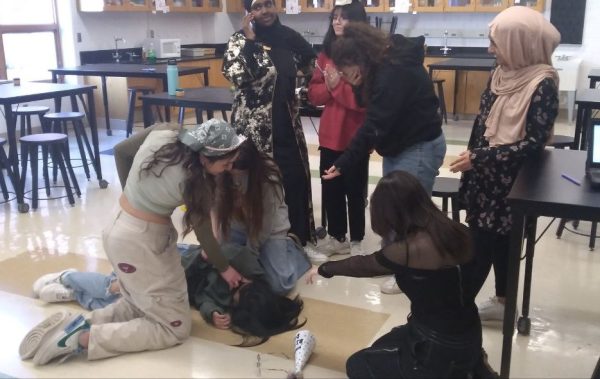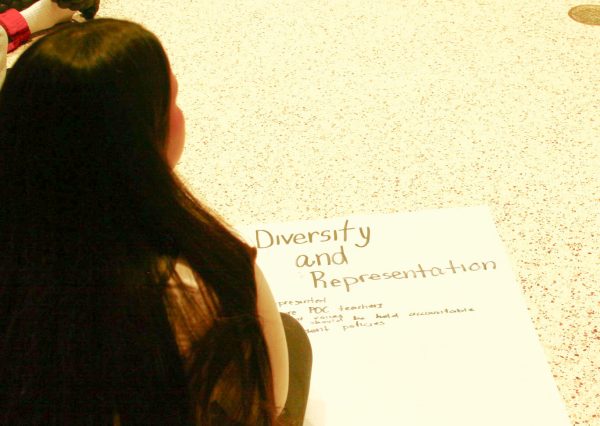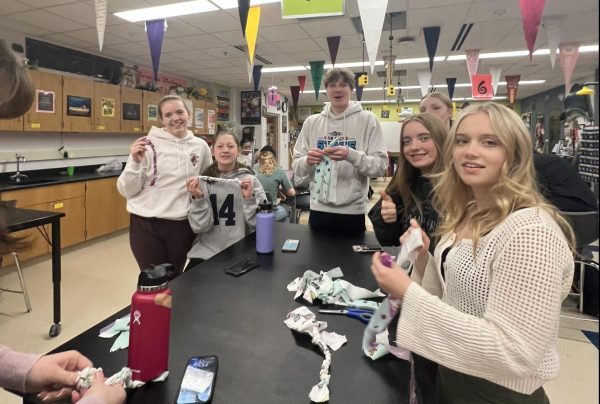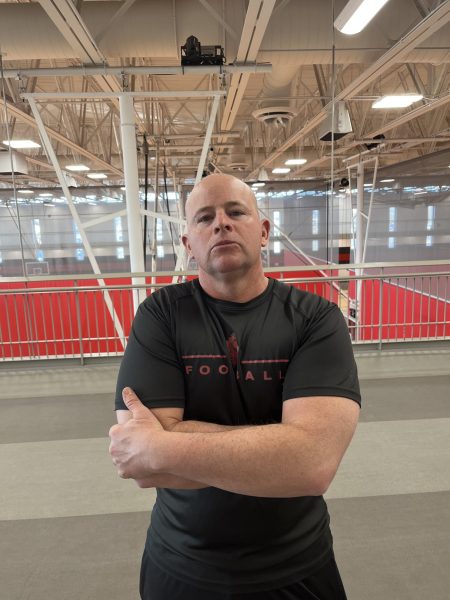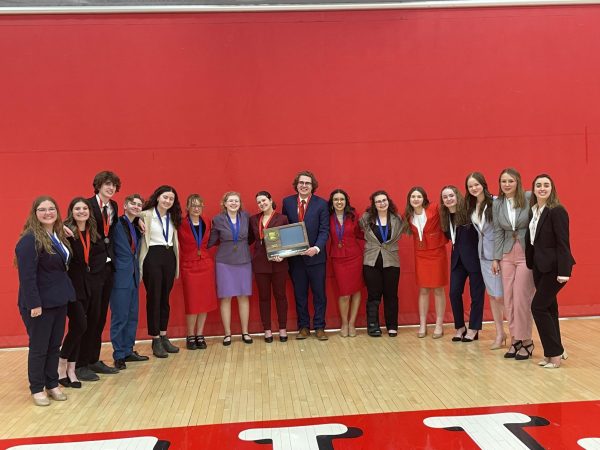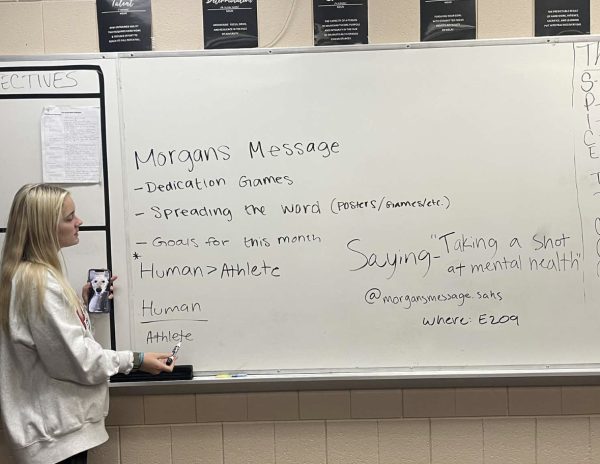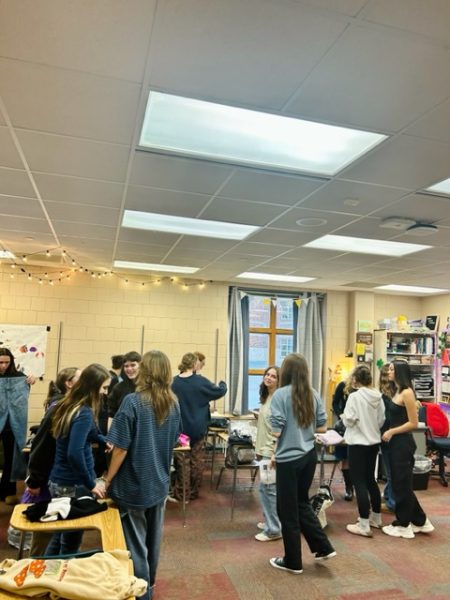Juniors take initiative by starting schools’ first reading club
Junior co-president Felicity Flemming reads her favorite genre, mystery in the school library. Fleming and Scanlan organized a Readers’ Club starting this fall.
“We are looking for a way to extend the reading community into the school community. Over the summer, we started a small book club and thought it would be a good idea to expand, with the goal to make friends, find people who like reading, and organize a book drive where we donate books to a nonprofit organization,” co-founder, junior Izzy Scanlan said.
Book clubs bring people of all backgrounds together to discuss a common interest. Moreover, books are propellants of change because they force the reader outside of their perspective. Reading widens people’s views by obtaining more knowledge on various topics.
“When we read, we hear different perspectives. It’s an opportunity for students to read the same book to push themselves to hear different voices and perspectives that the learning systems don’t cover in the community. And that just benefits us anytime we hear from people who don’t think the same way we do,” English teacher Sarah Sandquist said.
Clubs need a minimum of 12 students in order to meet formal guidelines. However, reading is not the most popular pastime for high school students, American Psychological Association states only 20 percent of U.S. teens report reading for pleasure. Such a low quantity presents challenges for building a Readers’ Club community.
Scanlan thinks the Readers’ Club will impact the school community because many of her friends are not avid readers and do not read outside of schoolwork. A common trend in the high school community is not many kids enjoy to read. The hope is to bring that to the school community and give students an opportunity to expand viewpoints and learn about new things in ways that are not the same as a regular English class.
Obviously, book clubs encourage reading, and reading entitles positive physical effects. One of which is stress relief. Even just six minutes of reading can reduce stress levels by more than 68 percent. Reading also keeps the brain healthy and helps people sleep better.
According to senior and member Trinity Thao, reading helps relieve stress because it transports someone into an alternate reality that cannot be experienced in another form. Thao also commented she feels less stressed than many of her non-reader friends. Simply taking the time to calm down and focus on one thing, rather than having a plethora of things that you need to prioritize, puts the mind at ease.
In other terms, attending a book club increases teamwork and writing skills. The Social Facilitation Effect is when your brain tells you that you work better around other people. Being in a book club gives participants motivation to read. Furthermore, it helps people get involved in the community, make friends, and gain new perspectives.
“The goal is for everyone to become good friends and to develop a community of people. Really what clubs are about in the first place, is getting to know each other, making new friends, and being able to share a love of reading,” co-president and junior Felicity Flemming said.
When we read, we hear different perspectives. It’s an opportunity for students to read the same book to push themselves to hear different voices and perspectives that the learning systems don’t cover in the community. And that just benefits us anytime we hear from people who don’t think the same way we do.
— Sarah Sandquist
Although the club will connect with a number of students in the weekly meeting and discussions, the co-presidents also plan to reach out to the community through a book drive. Volunteering helps strengthen ties to the community and broadens support networks.
“We are hoping to do at least like two meetings dedicated to organizing the book drive, and assign roles, like a secretary, to help us like organize the drive. Basically, we would have some hybrid learners maybe collect books at school and then work for a way to make this all Covid friendly, so everybody can have a role in it,” Scanlan explained.
Starting a club in the midst of the Covid crisis mends the barrier the pandemic and social distancing has created and brings people together. However, risk is involved and necessary precautions need to be taken.
In regards to safety measures, Flemming explained the club “plans on doing all the meetings over zoom, which obviously isn’t the most ideal thing, but we just want to make sure we’re respecting everyone’s approach to COVID. Some people are fully quarantined and other people are doing hybrid learning, so we just want to make sure that everybody who wants to can participate in groups. Then hopefully like once COVID clears up we can meet in person.”
“I had two two students approach me and they talked about this really neat idea where we would create a space where students gather and talk to one another about their love of reading. Just to share that passion with one another, and also unite around a common cause. As an English teacher, I want to cultivate that love of reading, because I think reading and sharing perspectives voices, expanding your horizons is that important,” Sandquist explained.

My name is Abby Anderson. I am a junior this year and a photography editor for the Pony Express. I play singles on the girls' varsity tennis team. I also...


